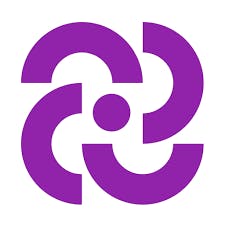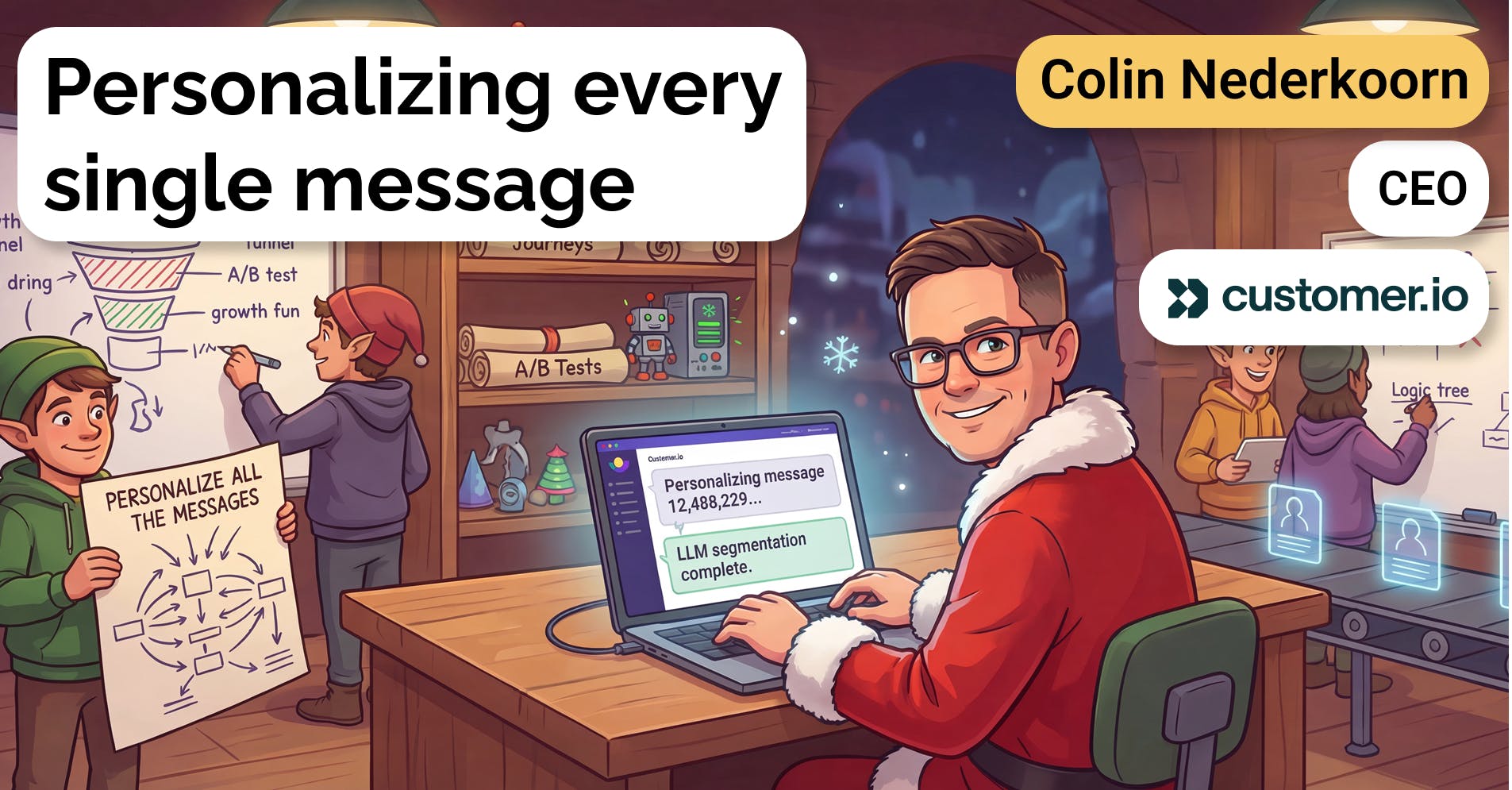Amy Loh, CMO of Pipe, on Pipe's next act as embedded fintech
 Jan-Erik Asplund
Jan-Erik Asplund

Background
Last month, Uber Eats announced that it was partnering with the fintech Pipe to offer its SMB merchants access to pre-approved loan offers.
Founded in 2019, Pipe launched as the “Nasdaq for recurring revenue”, raising $316M and hitting a $2B valuation to enable SaaS companies and SMBs to package their monthly recurring revenues as a financial asset & trade it to yield-seeking investors for upfront cash flow.
To learn more about Pipe’s new direction since their 2023 re-founding with Luke Voiles as CEO, we reached out to Amy Loh, Chief Marketing Officer at Pipe for a conversation.
Key points via Sacra AI:
- High customer acquisition costs combined with an adverse selection problem doomed Pipe’s direct-to-SMB model, with riskier businesses most likely to self-select into revenue-based financing, creating unsustainable unit economics. "Going direct to entrepreneurs and founders and offering revenue-based financing was hard to scale. You have to pump so much money into direct acquisition... In the previous model, you're going out to customers and they have to raise their hand. Naturally, there are going to be some riskier businesses in there."
- With Square Banking & QuickBooks Capital veteran Luke Voiles taking over as CEO in 2023, Pipe has shifted to an embedded fintech model, selling capital, cards, and expense management as white-labeled products inside vertical SaaS platforms & marketplaces like Housecall Pro & Uber Eats—giving Pipe distribution into millions of merchants in return for sharing economics on loan & interchange revenue. "If they're the operating system for small businesses, they have so much data on money coming in—payments transactions, invoices getting paid, appointments being made—but very little data on what money is going out... As you bring on a platform, you get distribution and scale to all their small businesses."
- Attach of existing customers to embedded finance products drives the revenue opportunity, with the benchmark of achieving first-party attach rates of a vertically integrated model like Square’s by making the UI and experience feel deeply native to match owned-channel performance. "It's really impressive to see that a lot of our partners are reaching near attach rates that are close to what a first party attach looks like. That speaks to how native and embedded our product is—it looks like a first party product, it feels like a first party product, and we're seeing the results of what a first party product would be."
Questions
- Can you describe the landscape of financing for small businesses? Our market map includes traditional lending, bank loans, venture debt, and various revenue-based approaches like merchant cash advances and factoring. Does that seem like the right way to categorize the market?
- Can you speak to moving into bank partnerships and more traditional loans, and how that fits into Pipe's strategy today?
- Back in 2022-2023, there was a startup banking crisis with SVB and a pullback in fintech with companies like Brex. What effect, if any, did that have on Pipe and other SMB lending models you've seen?
- Can you walk us through the transition from the initial incarnation of Pipe to what the company is now, including the leadership transition?
- Are you seeing anything similar with vertical AI?
- Can you explain the cards and spend management product? In the context of Uber, would you be offering them the ability to generate cards for their drivers and restaurant merchants?
- Why were cards the natural next product? Why that versus other products you could have built next?
- For a customer like Housecall Pro, what does the decision-making look like on their end with embedding a card via Pipe versus using services like Lithic, Marqeta, or Stripe Issuing?
- With the reboot of the business going B2B2C, was there technology that had been built previously that you were able to build on? Or did you have to build a lot of things from scratch to make this pivot?
- Were there things that you learned at Square and took with you to Pipe that have been helpful and inspirational?
- What's the key thing that makes customers choose Pipe over Square or Stripe, given the similarities in terms of underwriting based on revenue?
- Being native and embedded is clearly important, as is being white label. Do you think about presenting a brand to the end customer in any way? I think of Plaid, where you log into Schwab and it's a very temporary blip when you see the words Plaid, but it's a brand moment. How do you think about that?
- How do you think about future products? Do you have to think about where you're being complementary to a partner versus where you might start overlapping? For example, Uber has a bunch of embedded fintech products already to some degree.
- Going back to the transition moment from Pipe V1 to Pipe V2, you mentioned that customer acquisition was very expensive with the old model. Was that the biggest thing? Was there a risk profile question with going direct, or any other breakpoints for that initial vision of Pipe?
- Looking to the future, how do you think about interest rates going forward? Is that a big lever on the business model? And how big is diversification with multiple products in negating any impact?
- Who is the prototypical Pipe end customer today? What do they look like, maybe a range of what they're doing in terms of revenue?
- If everything goes right for Pipe over the next five years, what does Pipe look like and how has the world changed?
- In 2022, Pipe was in the US and the UK. Can you update us on geographic expansion and what the plans look like?
Interview
Can you describe the landscape of financing for small businesses? Our market map includes traditional lending, bank loans, venture debt, and various revenue-based approaches like merchant cash advances and factoring. Does that seem like the right way to categorize the market?
Today, the structure we offer is a merchant cash advance in the form of revenue-based financing. We are exploring bank partnerships that give us more flexibility, potentially moving into traditional loans, and that's coming quite soon.
Our business model is that we partner with platforms directly and take their data—historical transaction data and any proprietary data they have on their customers—which goes into our risk models and underwriting engine where we generate pre-approved offers for those specific merchants. These platforms are helpful because they provide not only the data but also become our distribution channel.
We can be Boulevard Capital or Uber Merchant Financing—an extension to their brand that builds trust for a financing product through our platform partnerships.
Can you speak to moving into bank partnerships and more traditional loans, and how that fits into Pipe's strategy today?
When you're a cash advance product versus a traditional loan, you have more limitations.
State-by-state regulations differ for cash advance products, including different things like broker licenses between us and our partners. Embarking on a bank partnership—and I can't disclose who the bank is or where we are in the process yet—but within the next six months, I feel confident we'll announce where we're going with potentially one of the bank partnerships.
It gives you less restrictive constraints from a product perspective. It also allows us to go much larger in size. Embarking on a bank partnership expands the credit box more so we can serve more small businesses.
That really is the goal and mission of Pipe: to be able to serve as many small businesses as possible around the world.
Back in 2022-2023, there was a startup banking crisis with SVB and a pullback in fintech with companies like Brex. What effect, if any, did that have on Pipe and other SMB lending models you've seen?
I don't know if it was most directly influenced by what was happening with SVB, but our previous founders—who are great, still on our board, and very involved in the company—were able to raise a good chunk of money back in 2021.
Eventually they brought on a veteran who has been in the fintech space for two decades to take Pipe into the next phase. When Luke came, what he found was that going direct to entrepreneurs and founders and offering revenue-based financing was hard to scale.
You have to pump so much money into direct acquisition. Because of what he had seen at QuickBooks Capital and Square Loans, the model of doing it inside the platform that small businesses are already using every day, taking that data and leveraging it to provide credit, is much more personalized and easier to scale. As you bring on a platform, you get distribution and scale to all their small businesses.
Take Uber as an example. We recently announced our partnership with Uber and we are live with Uber Eats merchants in all of the US today. We're also going global with them to Canada, Australia, and other European and APAC markets.
They are leveraging Pipe's secret sauce and underwriting model, giving us their data on their merchants and being able to offer very tailored offers. Uber Eats is huge—there are probably millions of merchants globally. That unlocks a lot of scale and distribution for us, as opposed to the first generation Pipe.
Can you walk us through the transition from the initial incarnation of Pipe to what the company is now, including the leadership transition?
When Luke came on, we didn't shut down the direct channel immediately. You could link your Square and Stripe data and get underwritten for credit directly, but we were seeing much more traction and scale when we launched our first partners like Priority, Boulevard, and Housecall Pro.
We really saw a sweet spot with vertical SaaS. Vertical SaaS platforms today are already the operating system for small businesses, so adding capital on top of their payments product was a really easy and natural extension. We've found extreme product-market fit with vertical SaaS platforms in particular.
Other platforms work well too. I wouldn't consider Uber a vertical SaaS platform, but the payments data and the richness of the data make them a really good partner.
Also important is how often those small businesses use that platform and access these offers, and how they're able to be repaid as a percentage of their revenue over time. We've really found extreme product-market fit with vertical SaaS platforms.
Are you seeing anything similar with vertical AI?
We are building AI into our products. Today there are a lot of internal use cases in terms of streamlining our merchant sales team, fraud and compliance, making sure we can turn that around and deliver a better customer experience. That's where we've been focusing today.
We're also building AI into our products, such as spend management. We have a card and spend management product today, and in this future AI world, they can actually take care of a lot of your finances—help pay your bills, help optimize your cash flow, and handle a lot of those things behind the scenes to take away those back office operations for the small business.
That's how it's being incorporated into our product, almost like the AI vertical agents you're talking about. A lot of the vertical SaaS platforms are building them, and for us, our data will plug seamlessly so it becomes an automated workflow for the small business.
Can you explain the cards and spend management product? In the context of Uber, would you be offering them the ability to generate cards for their drivers and restaurant merchants?
Let me use Housecall Pro as an example. They are able to white label and embed our card product, which they can then offer as a Housecall Pro card. It has the same rewards and benefits of typical business cards, like no annual fees, and merchants are getting pre-approved for a credit line of a specific amount.
What's really neat about the product is that when it's a pay-in-full 30-day charge card, at the end of the statement period, you can either pay from your bank account or you can draw down capital to help pay that card. It's connected to the capital product.
The capital and card products are also connected, not just because you can use capital to pay that balance, but also the underwriting is connected. Once they're approved and we have them underwritten for capital, the card is just there to turn on if the partner is using it. It's not an extra bunch of steps. Partners can turn on multiple products from the same integration.
Why were cards the natural next product? Why that versus other products you could have built next?
Luke is of the belief that you have to follow the small business pain points. Access to capital is the number one pain point for small businesses today because of the personal history required and the antiquated processes of traditional banks.
That's where he started, and that's the universal number one pain point across the world for small businesses. Spend management is the second.
That's why he really wanted to focus on card and spend management, because a lot of small businesses today are commingling their expenses.
They're using their personal credit card to pay for things, and they may not have access to a business credit card. We want to give them a way to streamline their expenses.
Once you get that spend on the card, you can categorize them and have a better view of what you're actually spending money on. You get insights and reports on what's trending up and down over time, and you can make smarter decisions for the small business.
There's also a ton of value for the partners. That's the benefit for the small businesses, but for the partners, they get more data on their customers. That's why they're really interested in the card.
If they're the operating system for these small businesses—let's use vertical SaaS as an example—they have so much data on money coming in: all the payments transactions they're taking, invoices getting paid, appointments being made. But they have very little data on what money is going out and what their customers are spending money on.
That's why this is a really great benefit for the partners, because now they're getting a 360-degree view of their small business's cash flow. They can help these small businesses be more successful and also recommend different services, different upsells, different products so that they are more deeply integrated into the ecosystem.
For a customer like Housecall Pro, what does the decision-making look like on their end with embedding a card via Pipe versus using services like Lithic, Marqeta, or Stripe Issuing?
The benefit of partnering with Pipe is that you only need to integrate once, and then you can figure out what products and features you want to turn on. You can configure what geographies you want to turn on.
You don't have to worry about all the things like licensing, risk, compliance—all of that. Pipe takes care of all of that behind the scenes.
You only need one partner and you have all this flexibility to turn things on or off based on what fits best within your platform. That's why people should partner with Pipe.
With the reboot of the business going B2B2C, was there technology that had been built previously that you were able to build on? Or did you have to build a lot of things from scratch to make this pivot?
Pipe has been in this business for some time. We already have capital markets knowledge and relationships, all the risk underwriting models. We weren't completely starting over.
But definitely moving from a direct business to embedded—the fact that we want to be able to help partners customize based on their branding with their embedded UI—there are definitely components that needed to be built and supported. We weren't starting from a foundation of zero.
What's really helpful is that we have a veteran leadership team. Luke, Claurelle, Jin—from a regulatory compliance perspective, Luke has done a really great job building out his executive team with a lot of deep experience in this space so that we have these best-in-class risk models.
We have product leaders who have done this before and can understand the pain points of the platforms and figure out the best way to integrate with them so that it's really smooth and seamless.
Were there things that you learned at Square and took with you to Pipe that have been helpful and inspirational?
I was in marketing at Square as well, and we talked about attach rates all the time in terms of what percent of products you can attach to customers.
Square and Square Loans, which was really pioneering a lot of this type of financing, has the best-in-class attach rates from a first-party perspective. It's impressive to see that a lot of our partners are reaching near attach rates that are close to what a first-party attach looks like.
That speaks to how native and embedded our product is—it looks like a first-party product, it feels like a first-party product, and we're seeing the results of what a first-party product would be. A lot of the DNA we've brought over to Pipe is that we know what good and best-in-class looks like, and now we can help shape a program that can help achieve that.
What's the key thing that makes customers choose Pipe over Square or Stripe, given the similarities in terms of underwriting based on revenue?
Stripe Capital and Square Capital are closed within their respective ecosystems, meaning they only underwrite off of Square or Stripe revenue streams. Pipe is agnostic.
We will underwrite off of all of your revenue streams. You could be using Square, you could be using Stripe, you could be using other legacy processors—we are payments agnostic and we can underwrite and give you access to more capital. That's the main differentiator.
Stripe does serve a lot of vertical SaaS companies. They recently opened up their ecosystem to underwrite additional cash flow streams. But Stripe is really inflexible in terms of branding and support. A lot of these things you have to do yourself. When you partner with Pipe, what really stands out for us is the service that you get.
We are very consultative. We will help you tailor and build a solution, and we can service it end to end, meaning you don't have to worry about support. If there's any fraud or operational overhead that Stripe would defer—where you would need to call Stripe for support—we service that end to end. We can act as if we are part of Housecall Pro or Uber, so you can easily turn on a new product and really not have to worry about anything at all.
Being native and embedded is clearly important, as is being white label. Do you think about presenting a brand to the end customer in any way? I think of Plaid, where you log into Schwab and it's a very temporary blip when you see the words Plaid, but it's a brand moment. How do you think about that?
We always think the partner brand needs to come first because when they're introducing a Pipe offer to their customers, they already have that trust with their customer. They are saying, "You should trust us because we have chosen to partner with Pipe." So our partner's brand is always first and foremost going to be more prominent and more important.
There is value in building a brand for Pipe as well, because if I'm an SMB and I see something is powered by Pipe, I would want to know: What does Pipe do? Do they serve people like me?
If you go on our website today, Josh has done an excellent job tailoring content both to platforms and to small businesses as well, because we want to assure the end user that we know small businesses, we know what their problems are, and we can solve them better than anyone else. That's why their platform has decided to partner with us.
How do you think about future products? Do you have to think about where you're being complementary to a partner versus where you might start overlapping? For example, Uber has a bunch of embedded fintech products already to some degree.
We definitely want to be able to help our partners achieve their roadmap too. For Uber, for example—and I'm not saying this is on the roadmap—but they could want to offer driver capital to their drivers. They have a really big international footprint that we would need to put on our roadmap to service Uber customers.
From a pure product perspective, we started with capital, we expanded to card and spend management.
Luke and Claurelle have really big ambitions to think through bill pay as something that's coming soon, and just other ancillary products that are attached to payments and capital that we want to be able to offer to platforms. They can just turn them on and offer them to their small businesses as well.
Going back to the transition moment from Pipe V1 to Pipe V2, you mentioned that customer acquisition was very expensive with the old model. Was that the biggest thing? Was there a risk profile question with going direct, or any other breakpoints for that initial vision of Pipe?
From a risk profile perspective, this model that we're in right now is better because we have more data from the platforms versus the other model. In the previous model, you're going out to customers and they have to raise their hand.
Naturally, there are going to be some riskier businesses in there. Whereas the businesses we serve today are so embedded within the platform, we get so much more data. From a risk profile perspective, it's better than the direct business, but I don't think risk was necessarily the main factor.
Scale probably was the biggest factor Luke was thinking about—coming in and thinking, "We have to spend a ton of money to acquire these customers. What is a way that we can do this much more at scale globally?"
Looking to the future, how do you think about interest rates going forward? Is that a big lever on the business model? And how big is diversification with multiple products in negating any impact?
This isn't my expertise, but from a capital markets perspective, they see fluctuating interest rates really not impacting our business that much.
In fact, a falling interest rate would actually be a direct benefit, reducing our cost of funding, which we can then decide if we want to keep or pass that benefit onto our platforms.
When interest rates are rising, we can actually pass on a lot of these higher costs to our end customer, because access to financing is just so scarce and the demand is there. We actually haven't seen interest rates being a factor in whether or not it affects the take rate of our product.
Who is the prototypical Pipe end customer today? What do they look like, maybe a range of what they're doing in terms of revenue?
Today, where we see most of our customers are probably making $50,000 to $1 million a year. Where our product might not be the best fit is probably up to a $5 million revenue range, because at that revenue range, you have other sources of capital readily available that might be better or more cost-effective. We are really trying to serve the underserved small businesses.
If everything goes right for Pipe over the next five years, what does Pipe look like and how has the world changed?
We are talking to some of the biggest partners that are out there globally, and there are a lot more that look like Uber that will really scale our distribution very quickly.
In five years, Pipe is going to be everywhere. Pipe is going to be all over the world. It's going to be in some of the biggest platforms and names that you know. It is a very exciting time. Our revenue growth rate is comparable to what Ramp has been able to achieve. Our CEO also believes we can do this faster than Ramp. It's a very exciting time.
In 2022, Pipe was in the US and the UK. Can you update us on geographic expansion and what the plans look like?
With the old model, that was the case. With the new model, we're now live in the US, UK, and Canada, and Australia is coming in just a few weeks—we're talking weeks, not months.
Next year there's more European expansion, more APAC expansion. We have a very aggressive expansion plan.
Disclaimers
This transcript is for information purposes only and does not constitute advice of any type or trade recommendation and should not form the basis of any investment decision. Sacra accepts no liability for the transcript or for any errors, omissions or inaccuracies in respect of it. The views of the experts expressed in the transcript are those of the experts and they are not endorsed by, nor do they represent the opinion of Sacra. Sacra reserves all copyright, intellectual property rights in the transcript. Any modification, copying, displaying, distributing, transmitting, publishing, licensing, creating derivative works from, or selling any transcript is strictly prohibited.









